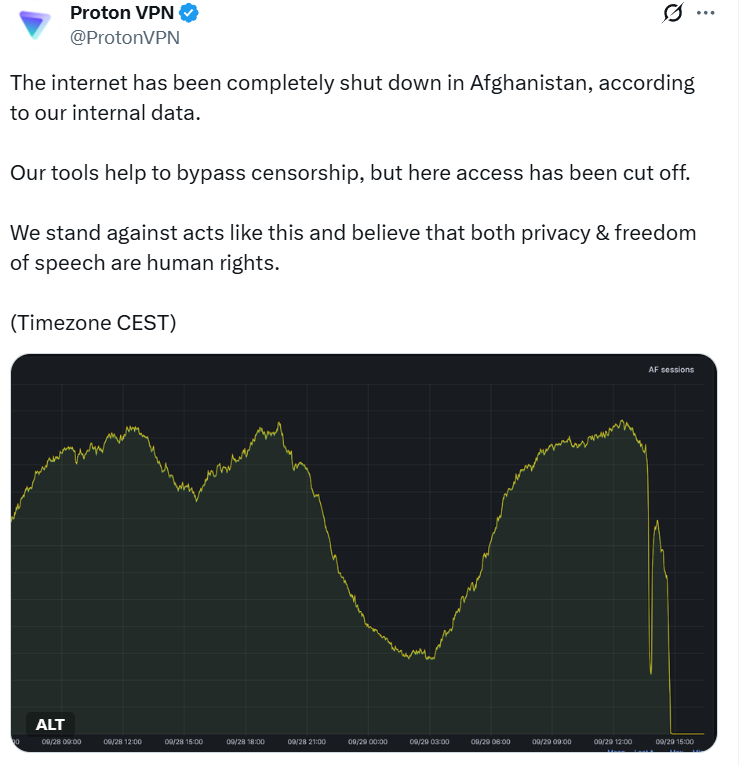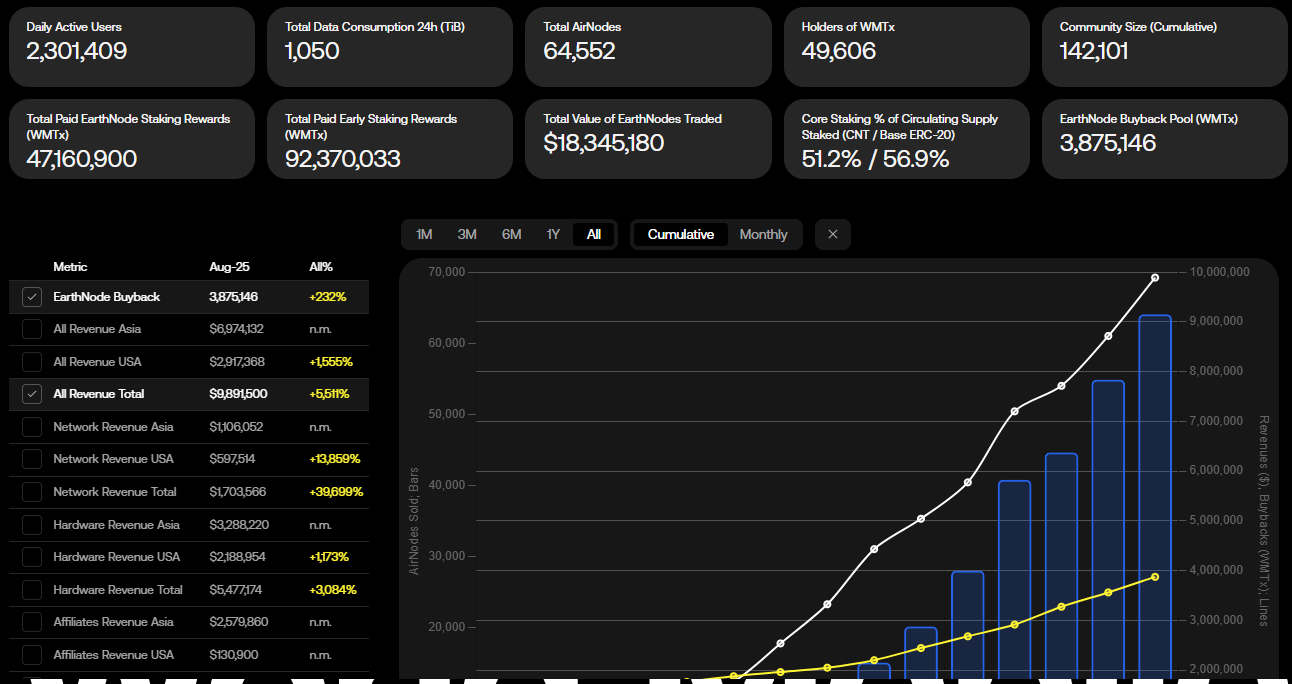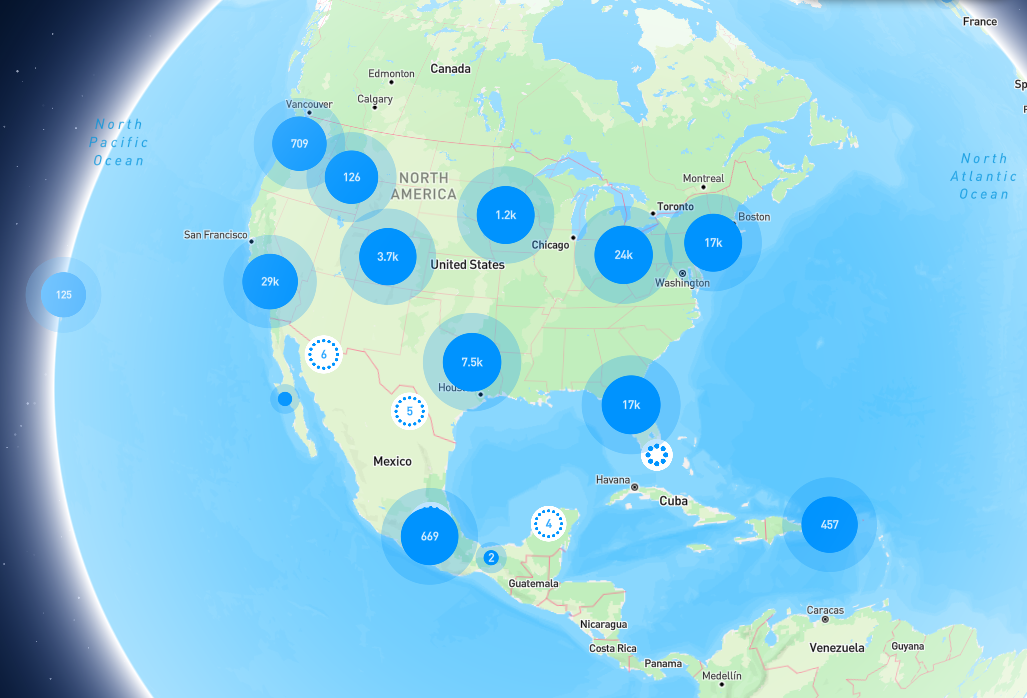Decentralized internet (DePIN) reduces blockchain censorship risk by shifting connectivity from centralized ISPs to peer-to-peer and mesh networks. DePIN projects like Roam, World Mobile, and Helium provide redundant connectivity and local relay options so blockchain apps remain reachable during government-ordered or technical internet outages.
-
Decentralized internet provides redundant, peer-to-peer connectivity to keep blockchain services reachable during national outages.
-
DePIN networks (Roam, World Mobile, Helium) combine mesh, hotspots and eSIM routing to lower single-point-of-failure risk.
-
Afghanistan outage affected ~13 million users; World Mobile reports 2.3M daily users and Helium reports 1.3M daily users.
Decentralized internet solutions: DePIN projects like Roam, World Mobile and Helium help protect blockchain from censorship during outages. Learn how to boost resilience.
Afghanistan’s internet blackout is highlighting the need for more decentralized internet infrastructure solutions to bolster blockchain’s resistance to censorship.
What is decentralized internet and why does it matter for blockchain?
Decentralized internet describes networks that route traffic via peer-to-peer, mesh, or locally distributed infrastructure rather than solely through centralized ISPs. This matters for blockchain because public ledgers remain inaccessible when national backbones are cut, undermining censorship resistance and value-transfer functions.
How did the Afghanistan blackout expose blockchain connectivity risks?
Afghanistan experienced a near-total internet shutdown lasting about 48 hours before partial restoration on Oct. 1, affecting roughly 13 million people, according to ABC News. The outage—reported as ordered by the Taliban then attributed to fiber-optic faults—demonstrates how blockchain nodes and wallets can be rendered unreachable when underlying internet access is controlled centrally.
The disruption shows that decentralization limited to protocol layers is insufficient if the physical network layer remains centralized.
How are DePIN projects building decentralized internet infrastructure?
Decentralized physical infrastructure networks (DePIN) deploy hardware, hotspots, eSIMs, and smartphone-driven meshes to create alternative routing paths. Projects like Roam, World Mobile and Helium incentivize local operators and users to host connectivity nodes, creating multiple overlapping access options.
Roam focuses on smartphone-powered mesh and eSIM routing so devices can automatically switch to the best available network—public carrier, private mesh, or peer-powered local network—during outages.

Source: ProtonVPN
World Mobile reports 2.3 million daily active users across 20+ countries and revenue distributed to node operators, stakers and contributors. World Mobile’s model pairs physical nodes with blockchain-based incentives to sustain coverage.

World Mobile ecosystem statistics. Source: worldmobile.io
Helium operates tens of thousands of hotspots and claims more than 1.3 million daily users across 190+ countries. Operators earn HNT token rewards for providing coverage, aligning economic incentives with network resilience.

Helium Network Statistics. Source: world.helium.com
Advocates argue that until the internet itself is more distributed, blockchain-based censorship resistance remains vulnerable.
What lessons can developers and users take from these outages?
Prepare multi-path connectivity for critical blockchain services: integrate mesh-capable peers, support offline transaction signing, and provide fallback relays (local nodes, Bluetooth or local Wi‑Fi relays). Design UX to surface alternative connectivity options and educate users on local access methods.
Frequently Asked Questions
Can DePIN fully prevent government censorship of blockchains?
DePIN reduces reliance on central backbones and raises the cost of censorship, but it cannot guarantee absolute prevention. Physical access controls, device seizures, and local regulations remain risks; DePIN mitigates many network-level failure modes.
How quickly can decentralized networks restore service during a national outage?
Recovery speed varies by network density. High hotspot density and widespread eSIM/mesh adoption can restore local connectivity within hours; sparser networks may take days to reach critical coverage levels.
What are measurable indicators of DePIN adoption?
Key metrics include daily active users, number of hotspots/nodes, geographic coverage, and revenue distributed to operators. Public project dashboards (project-reported) provide these statistics as adoption indicators.
Key Takeaways
- Decentralization at the physical layer matters: Blockchain resilience requires distributed internet infrastructure, not just protocol-level decentralization.
- DePIN is practical and growing: Projects like Roam, World Mobile and Helium already show millions of daily users and operator revenue models.
- Actionable preparedness: Developers should implement multi-path connectivity, offline signing, and user education to reduce outage impact.
Conclusion
Afghanistan’s outage highlights the urgent need to decentralize the internet’s physical layer to preserve blockchain censorship resistance. DePIN projects provide a measurable path to resilience; stakeholders should prioritize multi-path access, local node incentives, and user-facing fallback options to make blockchain services robust during future outages.
